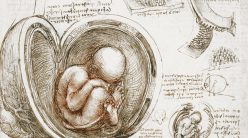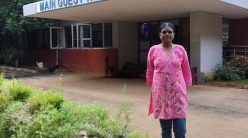JC Ghosh, an eminent chemist, was IISc’s Director during World War II and the founding Director of IIT Kharagpur. His grandson, Dipankar Ghosh, spoke to CONNECT about his grandfather’s personal and professional life.

In the late 1980s, E Arunan was looking for a place to stay in the midwestern town of Manhattan in the heart of the United States – he had just joined the Kansas State University to pursue his PhD. He eventually found a large house where three other Indian students were already staying. One of his housemates was Dipankar Ghosh. “I was doing my Master’s in Statistics while Arunan was doing his PhD in chemistry,” recalls Dipankar.
The two of them lost contact with each other once Dipankar graduated and left for New York. He became an IT professional and an entrepreneur based in the United States, while Arunan pursued a career in research and eventually joined the Department of Inorganic and Physical Chemistry at IISc as a faculty member (he is now the Chair of the Department).
A few years ago, however, thanks to Facebook, Dipankar and Arunan were able to renew their friendship. In 2014, during an email exchange between them, Arunan found out that his former housemate was the grandson of Jnan Chandra Ghosh, better known as JC Ghosh, IISc’s former Director, one of India’s most eminent chemists and a consequential institution builder in modern science.
Dipankar, who eventually moved back to India, met with Arunan and even visited IISc in late 2014. He also gave Arunan a few photographs of his grandfather.
The photographs, however, had not always been with Dipankar. He had found them rather fortuitously. In the mid-1990s, the family’s ancestral house in New Alipore in Kolkata – where JC Ghosh grew up and spent his last years – was sold. “But the new owners could not do anything much to the house because it was declared a heritage building,” he says. “I was in the USA at that time.” Dipankar was aware that a few things that belonged to his grandfather were still in the house. “After a year or two, I went back to the house and asked the new owners about the things that belonged to Dr JC Ghosh.” Their response disappointed him. “They said that it was all packed away in some trunks somewhere and they could not look for it then.”
“I went all over Calcutta looking for someone to restore at least a few of these photographs”
A few years later, Dipankar’s aunt, one of Ghosh’s daughters, called to tell him that she found a trunk at the ancestral house with some photographs. When Dipankar came to Kolkata the next time, he opened the trunk to find a few photographs of his grandfather, but they were in poor shape. “The glass was broken and there was pigeon poop all over it,” he recalls. But he felt that he might be able to save a few. “I went all over Calcutta [now Kolkata] looking for someone to restore at least a few of these photographs. Back then, people would have to restore photographs by hand. Then I found two old people in a dilapidated studio who agreed to do it.” Once the photographs were restored, Dipankar handed them to Arunan when they finally had an opportunity to meet in person. Arunan promptly passed the photographs on to the IISc Archives for safekeeping.

Ghosh was born in 1894 in Purulia District in the Bengal Presidency. He was a product of what came to be known as the Bengal Renaissance – a cultural, social, intellectual, artistic, and scientific movement that took root in the region in the late 18th century and continued until the early 20th century. Among the many scientists who emerged from Bengal during this period include Satyendranath Bose, Meghnad Saha, JC Bose, Upendranath Brahmachari, and Ghosh himself.
“He [Ghosh] lived in a joint family. My grandfather was the third of four brothers. But they moved to Calcutta and they were all inspired to get educated,” says Dipankar. Ghosh obtained his BSc in 1913 and MSc in 1915 from Presidency College in Calcutta. “During his BSc, which he did in Chemistry, his batch mates were Meghnad Saha who was in Physics and SN Bose who was in Mathematics.”
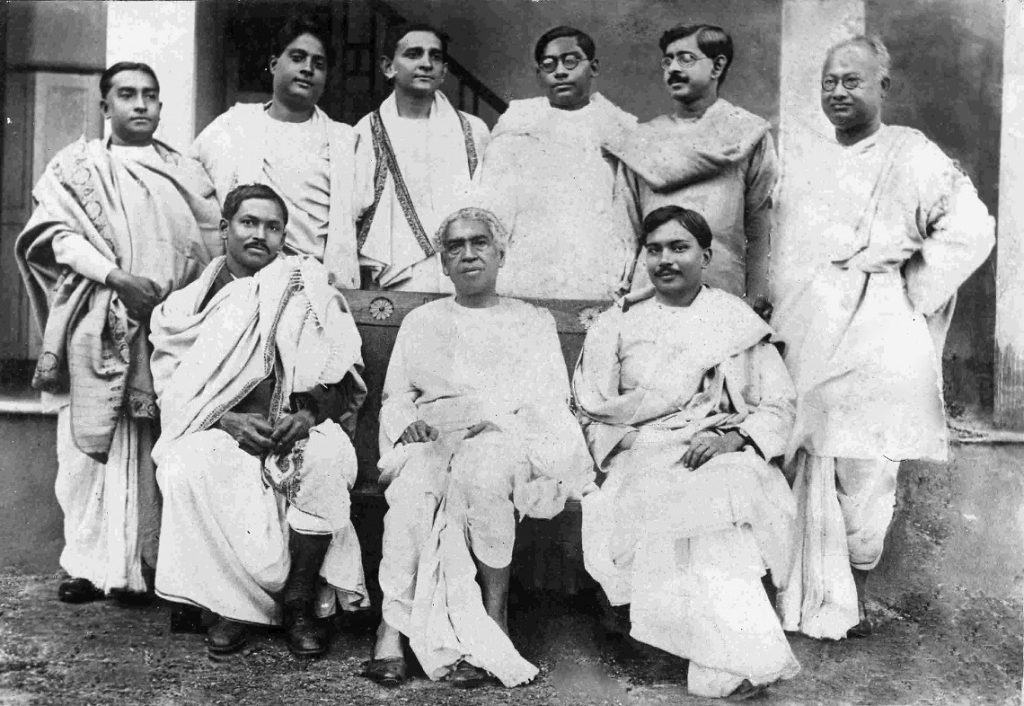
and SN Bose (standing; second from left) (Photo courtesy: Dipankar Ghosh)
Even before his Master’s results were out, Ghosh was invited to join the Chemistry Department of Rajabazar Science College, which had just been founded by the noted educationist and Vice Chancellor of Calcutta University, Ashutosh Mukherjee.
The next momentous year in Ghosh’s life was 1919. He won a scholarship that year to pursue a doctoral degree in photochemistry at the University College, London. The year was significant for another reason. “He got married to my grandmother, Neelima, in 1919 – I have a table in my house [from that year] that came to my grandfather as dowry. The story is that they met when my grandfather was still at Presidency.”
“He got married to my grandmother, Neelima, in 1919 – I have a table in my house [from that year] that came to my grandfather as dowry”
While in London, Ghosh studied electrolytes and came up with what is known as the theory of strong electrolytes. His work initially attracted controversy but eventually won him acclaim when it was buttressed by experimental evidence. News of his work reached India and not long after, in 1921, Ghosh was invited to join as Professor and Head of the Chemistry Department of the recently established Dacca (now Dhaka) University.
Ghosh accepted the offer and moved to Dacca with Neelima. His time here was easily his most productive phase in terms of research. He went on to establish an important school of research in photochemistry, well before it became a fashionable area of investigation. While they were in Dacca, the family grew, says Dipankar – they had two girls and three boys, including Dipankar’s father.
When Ghosh was blazing trails in his research at Dacca University, IISc in Bangalore was looking for a new Director in the late 1930s. During this time, the Institute had an Acting Director (CV Raman had been forced to resign as the Director in 1937). The search committee homed in on Ghosh – who was still only 45 – in 1939.
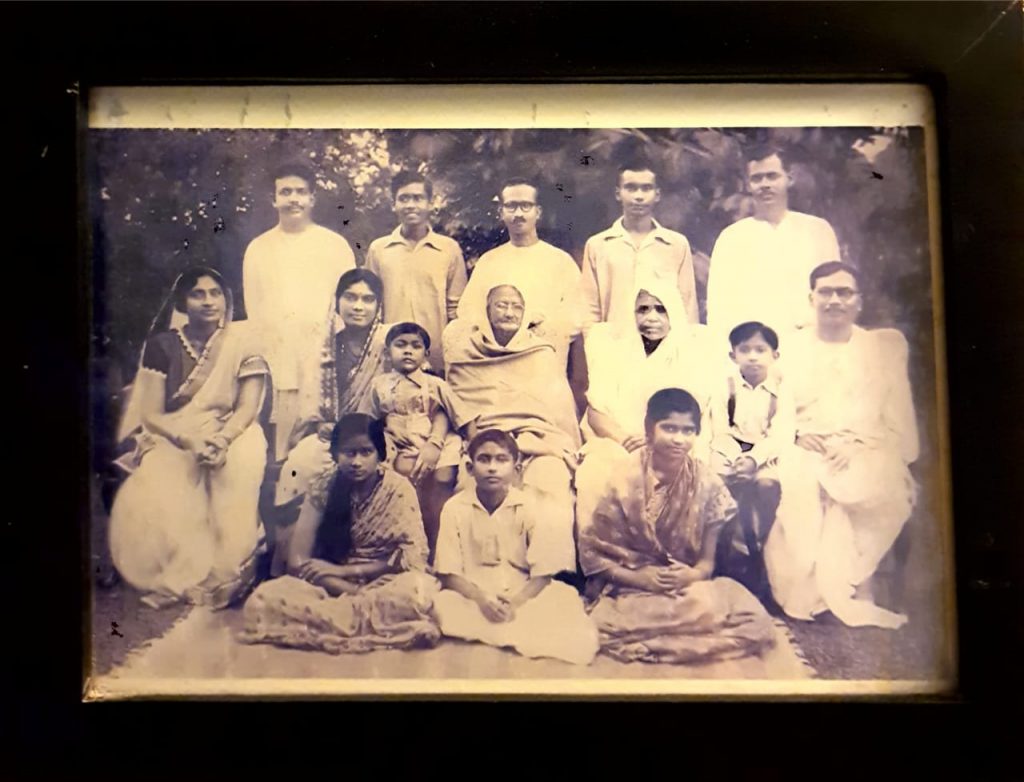
Ghosh (sitting on chair; extreme right) and Neelima (sitting on chair; extreme right) with their large family just before he left Dacca. The entire family moved to the Director’s bungalow at IISc a few days after this photograph was taken (Photo courtesy: Dipankar Ghosh)
By then, Ghosh was counted among India’s best scientists. He was also favoured for the job because of the leadership qualities and administrative skills he displayed when he led the Chemistry Department at Dacca. Dipankar thinks that there was yet another reason why Ghosh was chosen to become IISc’s Director.
“There are letters which I have seen that show that when he was at Dacca, he travelled all over India to universities that were being set up, like the Andhra University in Visakhapatnam. They would invite him and get his guidance and inputs as they were founding these institutes, especially in South India. He was quite amenable and ready to help.”
According to Dipankar, Ghosh “gained prominence” in South India in the 1920s and 1930s. He became known to the royal families of princely states and to the British who were involved in setting up these institutions. “So, he built a reputation that he was somebody who could get things done.” There were other qualities in Ghosh that might have made a frontrunner for the job, says Dipankar. “He was diplomatic. He was very polished and dressed like an English gentleman.”
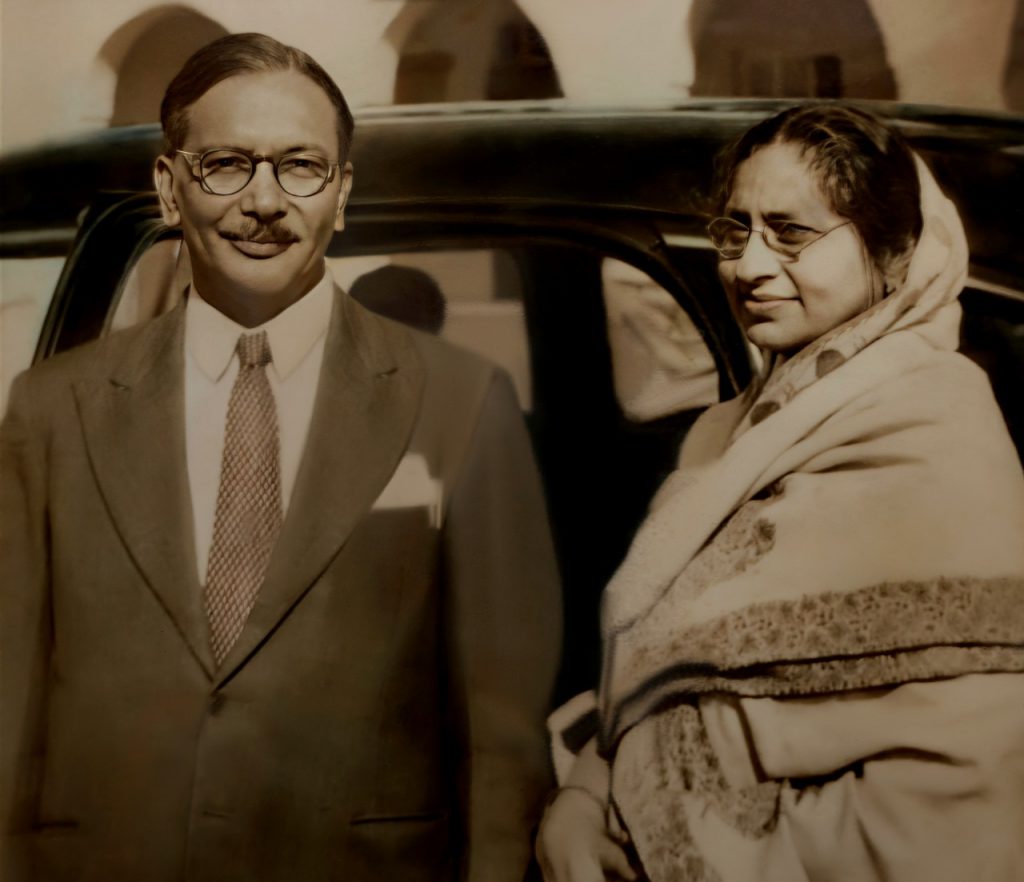
Once Ghosh got the job offer from IISc, he moved to Bangalore with the rest of his now somewhat large family. “They belonged to that part of society who knew what was going to happen [partition of India]. So, they all, including one of my grandfather’s research assistants, moved to Bangalore together,” says Dipankar. He adds that the research assistant eventually became family and even a trustee of his grandfather’s estate when he died.
Ghosh served nearly two terms as the Director of IISc. As his second term was coming to end, Ghosh was appointed by India’s first Prime Minister, Pandit Jawaharlal Nehru, as the Director-General of Industry and Supply, a position he held from 1947 to 1950 (he was given a leave of absence from IISc and an Acting Director was appointed in his place when he left for Delhi). He was also made a member of the All India Council of Technical Education when he was in Delhi.
It is believed that when students at IIT Kharagpur heard that Ghosh was leaving, they went on a mass strike
In 1951, Ghosh was chosen for yet another challenging task: to become the founding Director of India’s first Indian Institute of Technology (IIT) at Kharagpur. Once he helped set it up – it was the only IIT among the earlier ones set up without help from other countries – and nurtured it through the birth pangs, he was asked to take over as the Vice Chancellor of Calcutta University, his alma mater, in 1955. It is believed that when students at IIT Kharagpur heard that Ghosh was leaving, they went on a mass strike. Ghosh addressed them on the lawns of the campus to console them, where it is said, he himself broke down. “Yes, it did really happen,” confirms Dipankar, who studied at IIT Kharagpur too.
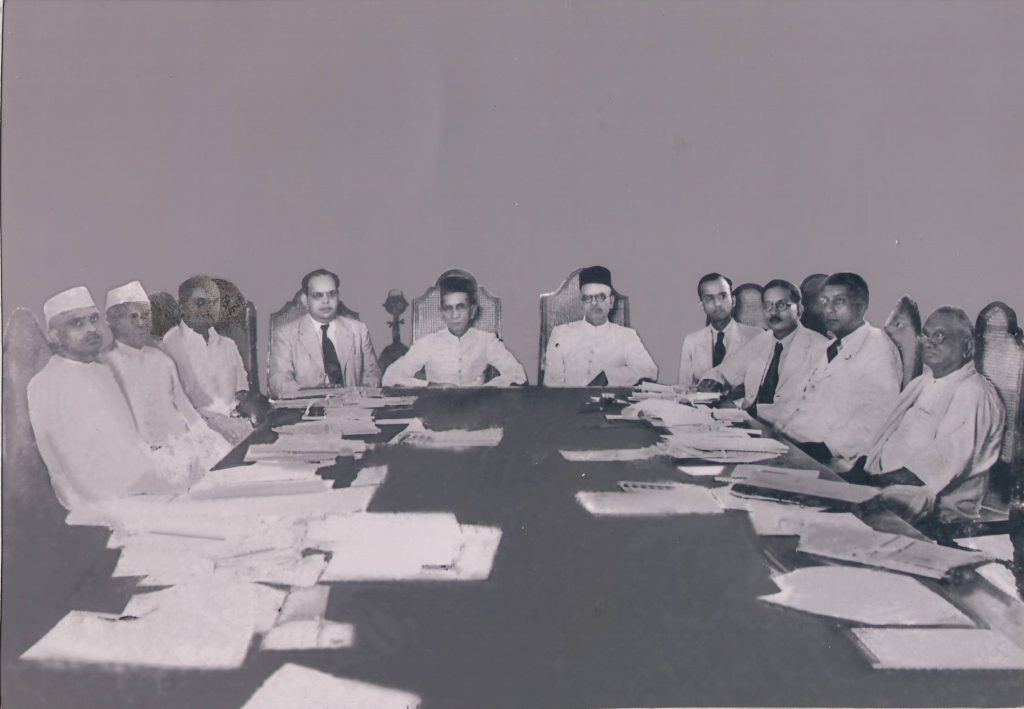
Ghosh, at this time, was also appointed as a member of the Planning Commission, along with the likes of PC Mahalanobis. But not long after, he became unwell. He was eventually diagnosed with stomach cancer, reveals Dipankar. He spent his last few years in the family’s ancestral home in Calcutta until his death in 1959.

Ghosh was appointed as IISc’s Director on 1 August 1939 and served two terms. This was a critical period in IISc’s history. His first task was to work on projects related to India’s industrialisation. The Court of IISc recommended that Ghosh head a committee head a committee to work towards this (it also had the well-known physicist Meghnad Saha, then a member of IISc’s Governing Council, on it). The committee met several times a year to draw up a “definite scheme for industrial research” and monitor the progress of several projects related to industrialisation. It was no coincidence that several engineering departments came up during his tenure: Aeronautical (now Aerospace) Engineering, Metallurgy (now Materials Engineering), Chemical Engineering, Internal Combustion Engineering and Power Engineering (the latter two departments gave rise to Mechanical Engineering).
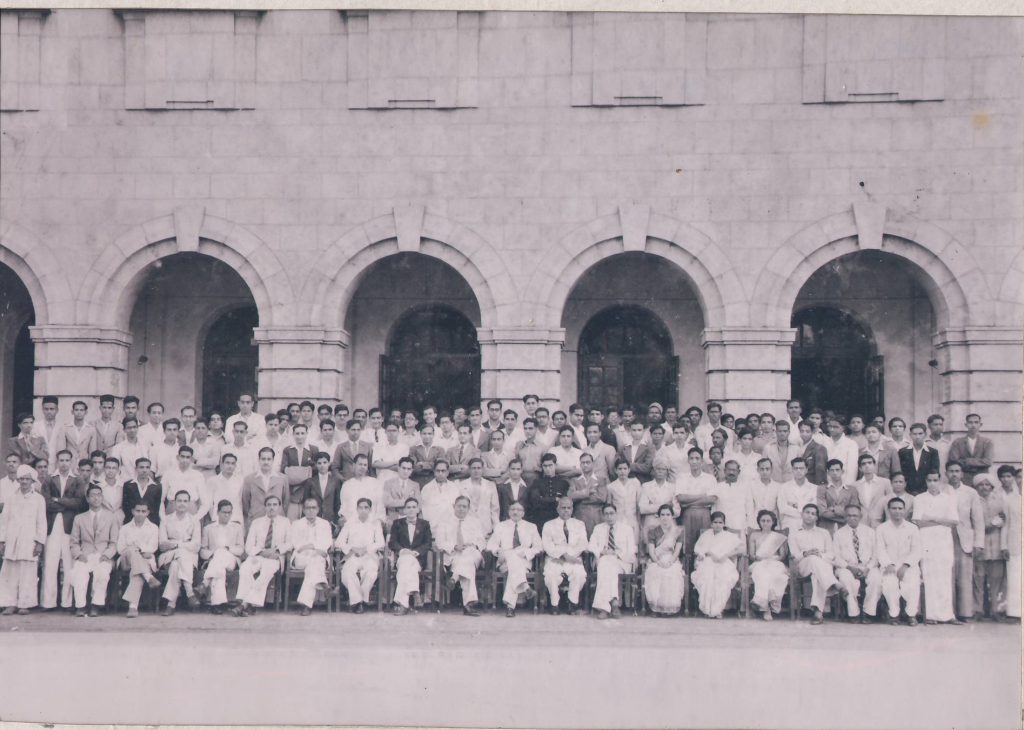
(Photo courtesy: Dipankar Ghosh)
The Institute was also called upon to help the British war effort. Towards this end, several new projects were carried out at IISc. Besides, the Institute’s technical expertise was used to set up new industries to help the British.
Ghosh’s obsession with work, however, came at a cost. He had little time for his family, according to Dipankar. “He was very busy. My father and the rest of the family interacted very little with my grandfather. He was aloof from my father, and uncles and aunts. They knew very little about him.”
But the family had a good time in Bangalore, says Dipankar. “My father went to St Joseph’s [Boys School] and my aunt to Baldwin’s [Girls School]. The entire family loved Bangalore. They made many friends there. And until they passed on a few years ago, they would visit their school friends from the 1940s when they came here.”
Dipankar says Ghosh was more focused on doing “something much bigger than chemistry” during his time at IISc. “He was very proud of his legacy. He wanted to leave something behind that lasted forever.”


